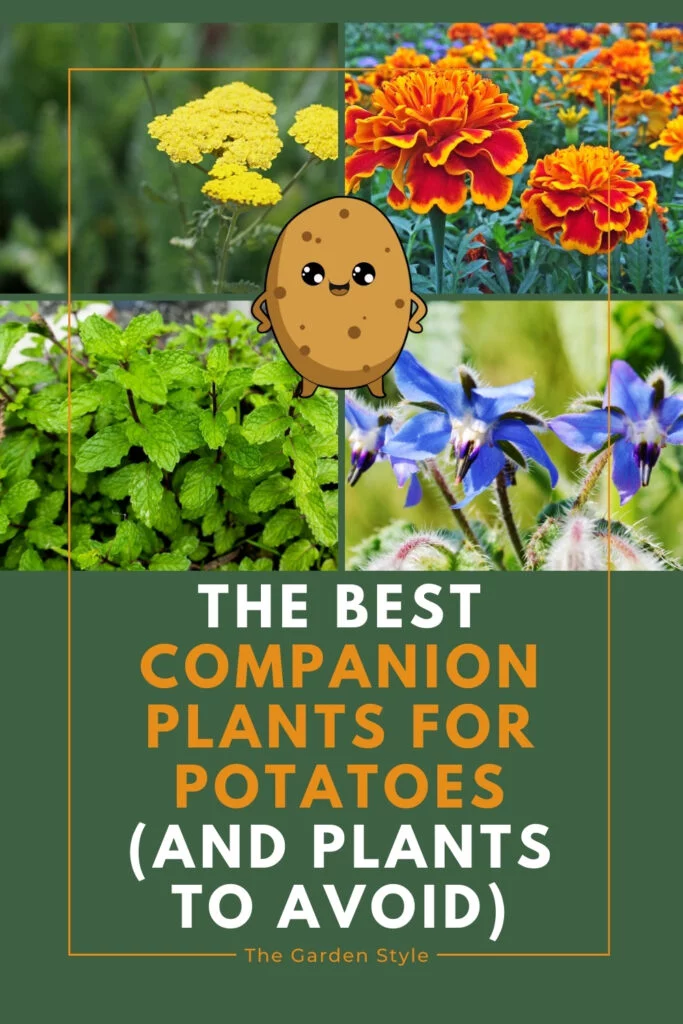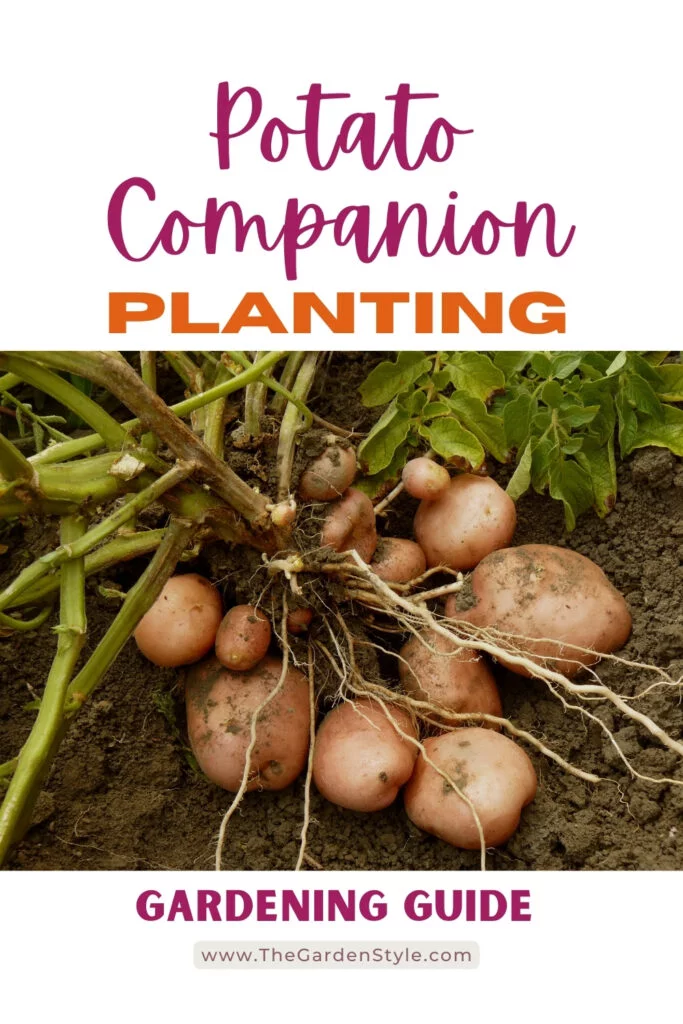Potatoes are a staple crop in vegetable gardens around the world, prized for their versatility and nutritional value. But did you know that strategically planting certain companion plants for potatoes can boost your yields, deter pests, and even enhance flavor? Companion planting is an age-old practice that harnesses the natural partnerships between different plant species to create a harmonious, productive garden ecosystem. In this comprehensive guide, we’ll unlock the secrets of the best companion plants for potatoes and how to put them to work for a bountiful harvest season after season.
Table of Contents
Understanding Companion Planting
Companion plants are different plant species that are grown together for mutual benefit. This ancient technique takes advantage of the unique traits of each plant to create a harmonious ecosystem in your garden. Some companions help repel pests, others fix nitrogen in the soil, and some even improve the flavor of their neighbors.
Companion planting offers a wide range of benefits, from increased yields to natural pest control. It’s an eco-friendly and sustainable way to grow your veggies while promoting biodiversity and soil health.
The Best Companion Plants for Potatoes
| Companion Plants | Benefits for Potatoes |
| Legumes (Beans, Peas, etc.) | Fix nitrogen in the soil and provide physical support for vines. |
| Alliums (Onions, Garlic, Leeks, Chives, Shallots) | Repel pests like aphids, beetles, and nematodes; may improve flavor. |
| Marigolds | Deter nematodes and rabbits. |
| Horseradish | Repel potato beetles and accumulate nutrients in the soil. |
| Rosemary | Repel pests like beetles, aphids, and spider mites. Contain natural fungicides. |
| Nasturtiums | Act as trap crops, lure pests away, and deter nematodes. |
| Mint | Confuse pests, repel rodents (when contained) |
| Borage | Attract beneficial insects, accumulate calcium, and aerate the soil. |
| Radishes | Loosen soil and act as trap crops for nematodes and root maggots. |
| Yarrow | Attract beneficial insects, accumulate nutrients, and improve drainage. |
| Cilantro | Attract beneficial insects, repel pests, and improve soil quality. |
| Petunias | Attract beneficial insects, trap and control smaller pests. |
Legumes (Beans, Peas, etc.)
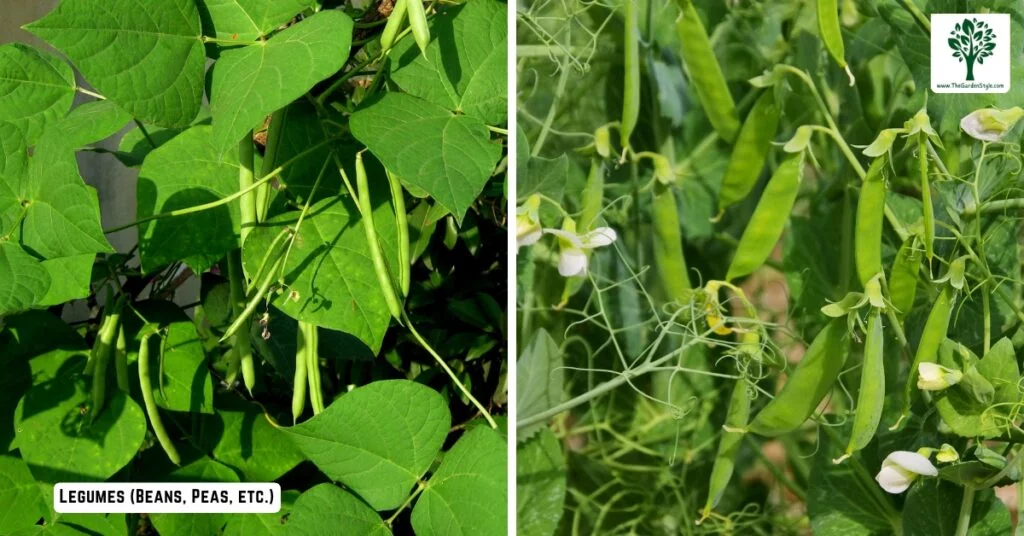
Legumes like bush beans, pole beans, peas, fava beans, and clovers make rockstar companions for potato plants. These plants have the unique ability to “fix” nitrogen from the air through nodules on their roots that house nitrogen-fixing bacteria. The bacteria convert atmospheric nitrogen into a plant-usable form, enriching the soil with this vital nutrient.
As leafy legumes grow, they continuously replenish the soil with nitrogen reserves that potato plants can readily absorb. This steady supply of nature’s fertilizer helps potato plants thrive, resulting in lush foliage growth and bigger, more plentiful tuber yields come harvest time.
Bonus tip: Vining legumes like pole beans provide the added benefit of acting as a natural trellis or support for potato plants. Their trailing stems prevent potatoes from sprawling across the ground, allowing better air circulation and reducing disease risk.
Alliums (Onions, Garlic, Leeks, Chives, Shallots)
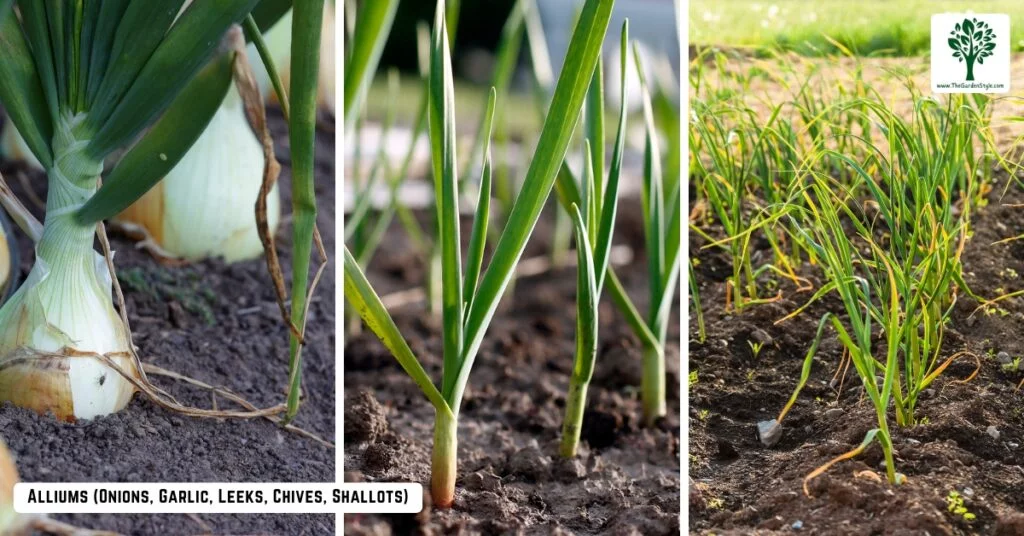
The allium family, which includes onions, garlic, leeks, chives, and shallots, is an essential companion for potato patches. These pungent, aromatic vegetables release sulfur compounds and other natural biochemicals that confuse, repel, and sometimes kill many common potato pests.
Alliums are extremely effective at deterring sap-sucking pests like aphids, as well as hard-bodied insects such as potato beetles, wireworms, and nematodes. Their strong scent seems to mask the aromas that normally attract these pests to potato plants.
In addition to pest control benefits, alliums like chives are thought to enhance the flavor of potato tubers when grown together. Some claim the compounds released by these plants get absorbed, giving potatoes a subtle onion or garlic undertone. Learn how to grow garlic from a clove.
Marigolds
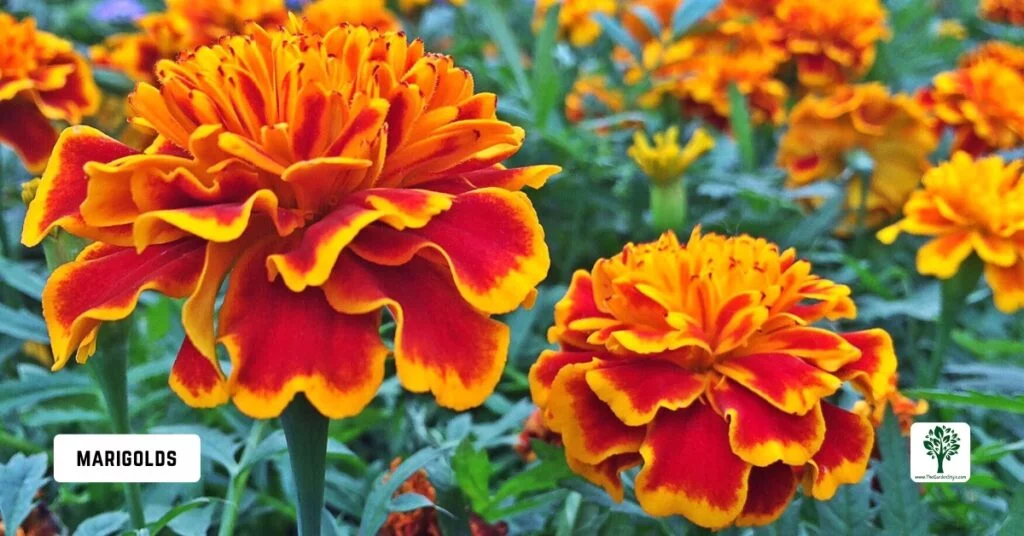
Cheerful marigolds are more than just a pretty face in the garden. Their strong scent deters nematodes, microscopic worms that can damage potato crops. Marigolds are also said to discourage hungry rabbits from munching on your potato plants. Learn how to grow marigolds.
Horseradish
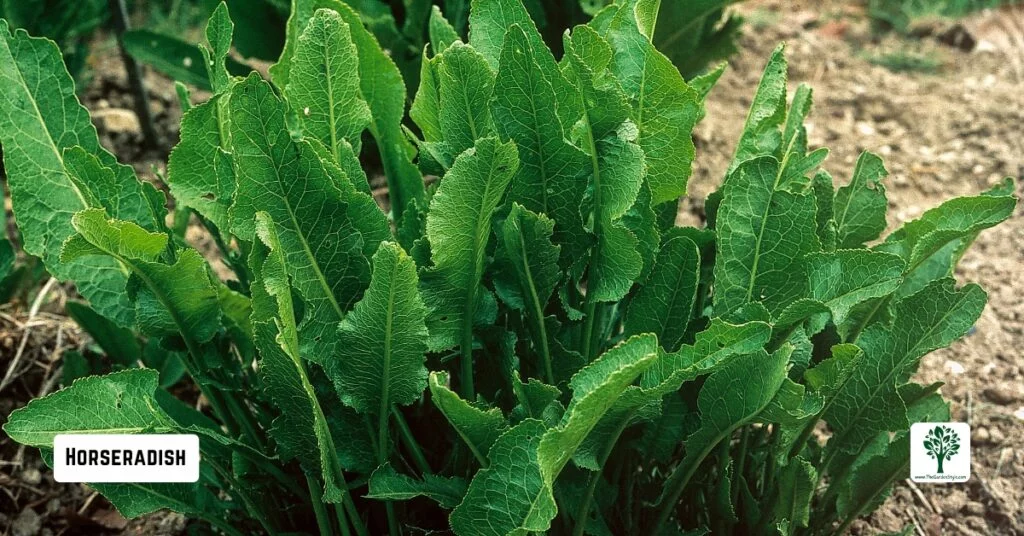
This pungent root veggie is a powerhouse companion for potatoes. Horseradish is known to repel potato beetles and accumulate nutrients in the soil, making them readily available for your potato plants.
Rosemary
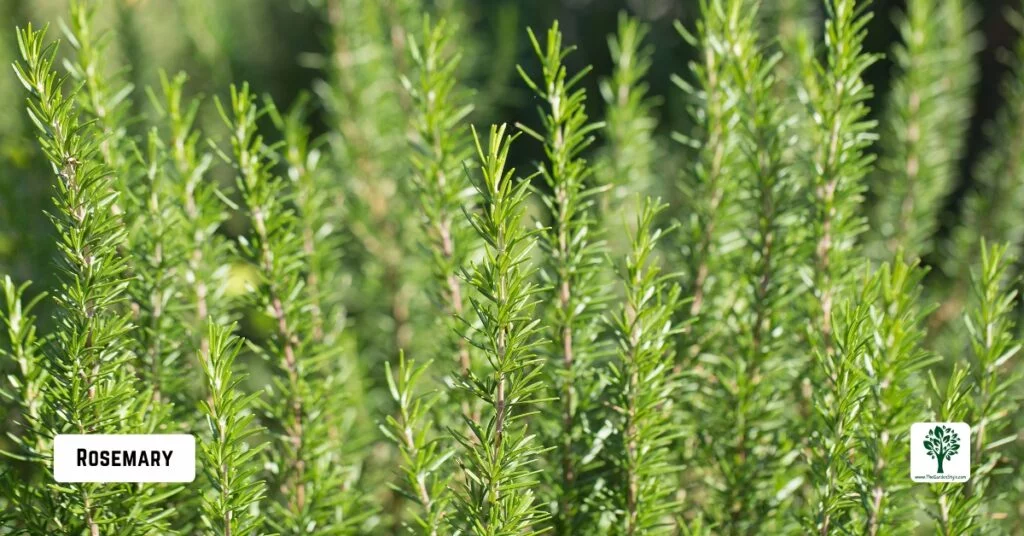
Rosemary is an aromatic herb that can help repel a number of potato pests, like potato beetles, aphids, and spider mites. Its aromatic scent confuses these insects and masks the smell of potato plants.
Rosemary also contains compounds that are natural fungicides, which can help prevent diseases in potato crops. Plus, it’s a drought-tolerant plant that doesn’t compete heavily with potatoes for moisture.
Nasturtiums
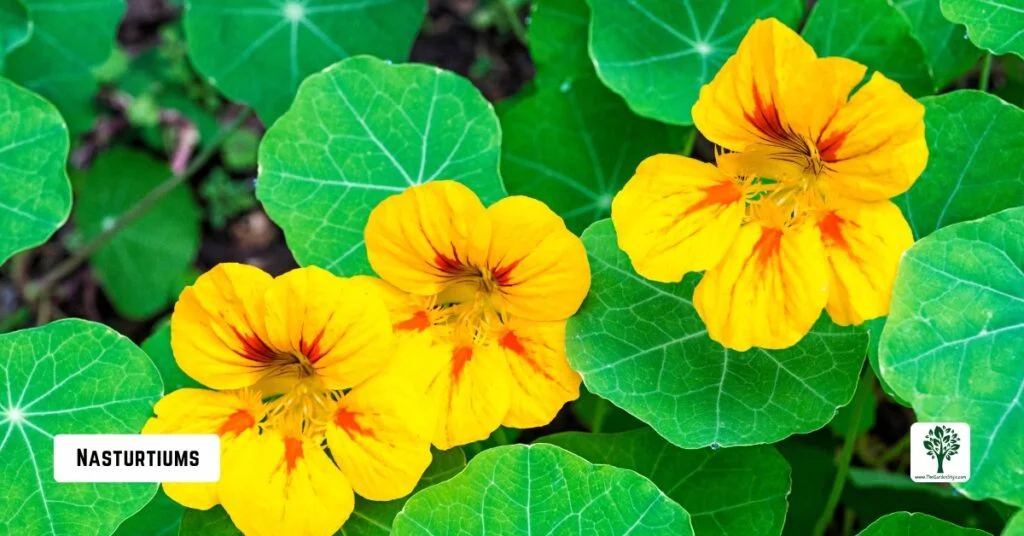
These bright, edible flowers are excellent companion plants that act as a trap crop, luring pests like aphids and potato beetles away from your potato plants.
Nasturtiums produce a potent smell and have a distinctive flavor that many pests find unappealing when they affect potato plants. Their roots also release a natural fumigant that deters nematodes.
Mint
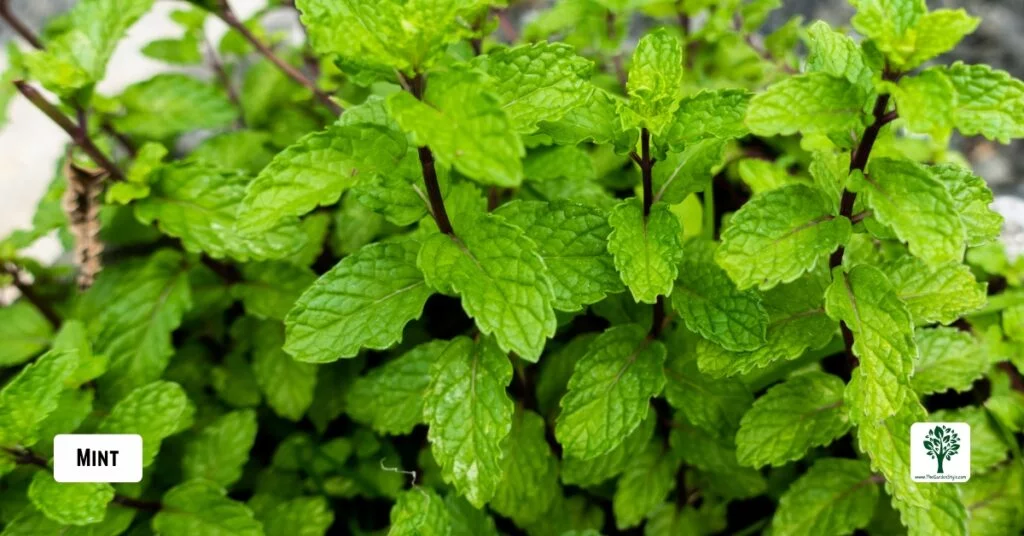
While mint can be an aggressive spreader, planting it near potato crops has benefits. The strong aroma of mint confuses potato beetles and other pests, preventing them from locating potato plants.
Mint may also help repel rodents that could otherwise burrow near and damage potato tubers. Just be sure to contain mint by growing it in buried containers to prevent it from overtaking your garden.
Borage
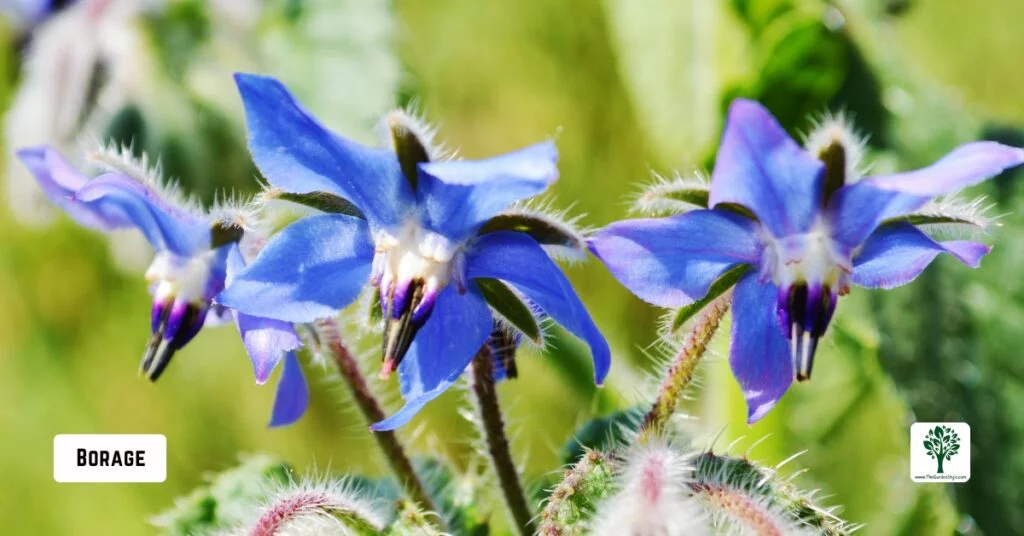
This annual herb with beautiful blue star-shaped flowers attracts beneficial insects like parasitic wasps that prey on pests. Borage also accumulates calcium, making it readily available for potato plants.
The plant’s prickly stems and leaves create a physical barrier that deters small munching pests. Plus, borage’s taproot helps break up and aerate compacted soils for better potato tuber formation.
Radishes
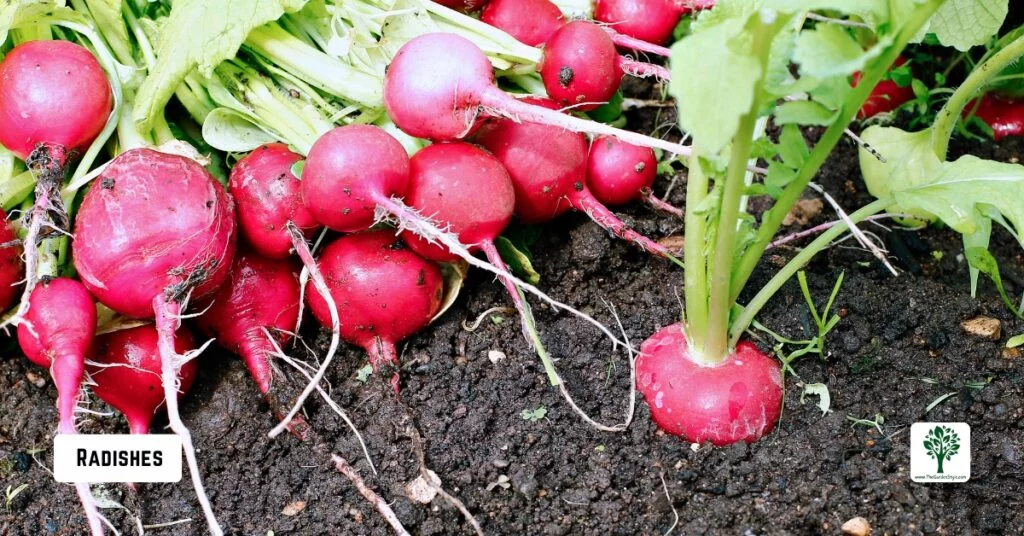
Fast-growing radishes are an excellent short-season companion crop for potatoes. They help loosen and aerate the soil with their taproot as they grow, creating ideal conditions for potato tubers.
Radishes also act as a trap crop, luring nematodes and root maggots away from potato plants. Their pungent odor and spicy flavors further confuse many potato pests. Learn how to grow radish.
Yarrow
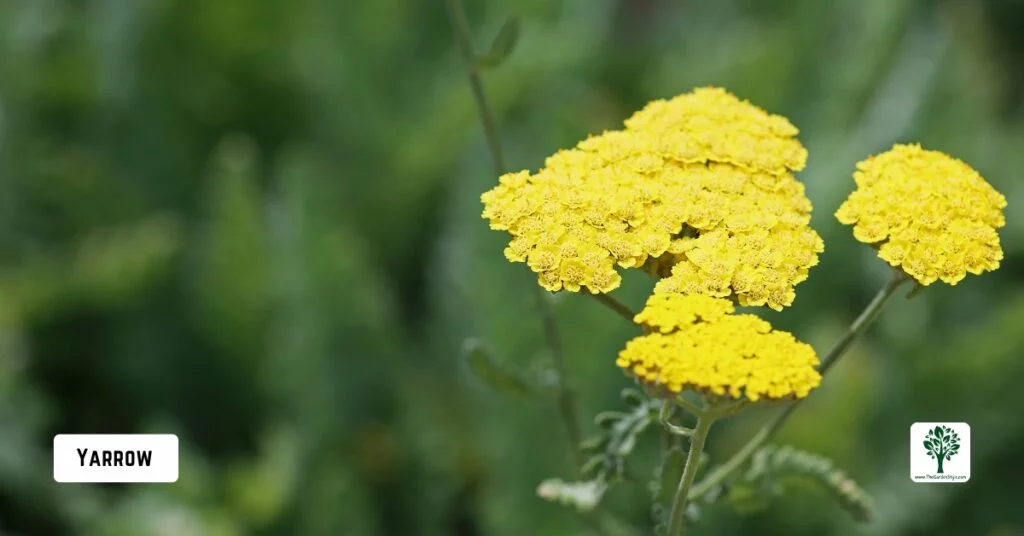
Yarrow is an excellent flowering companion plant for potatoes. This hardy perennial produces clusters of tiny blooms that attract many species of beneficial insects to the garden.
These beneficial insects include predatory wasps, lacewings, ladybugs, and more – all of which help control populations of aphids, potato beetles, and other pests that plague potato crops.
Cilantro
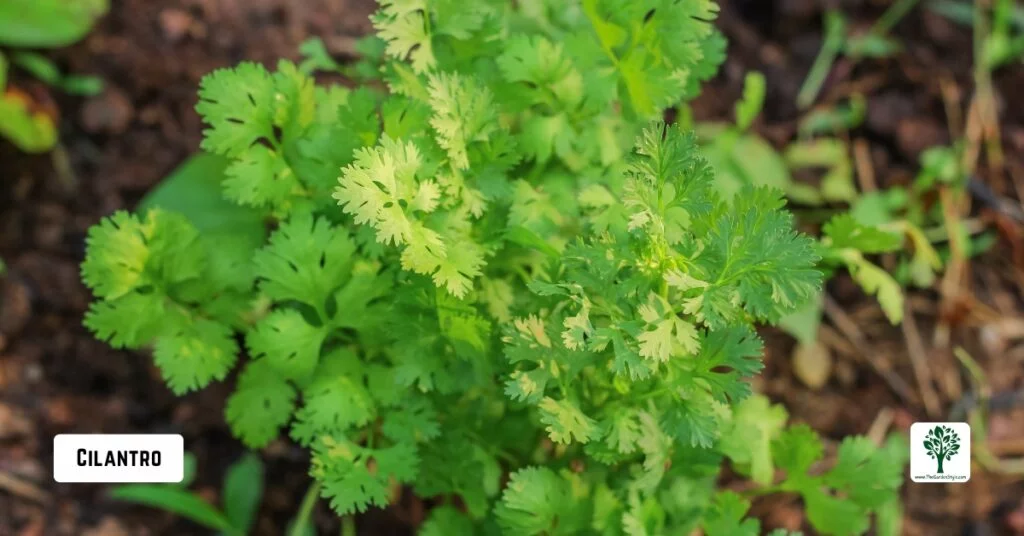
Cilantro is a cool-season annual herb that makes a great companion for potato plants. Its bright green foliage and delicate white blooms attract many species of beneficial predatory insects like ladybugs, lacewings, and parasitic wasps that prey on potato pests.
The strong aroma of cilantro helps repel aphids, spider mites, potato beetles, and other foliar pests that can damage potato crops. As cilantro leaves decompose, they improve soil quality by adding nutrients and organic matter. Learn how to grow cilantro.
Petunias
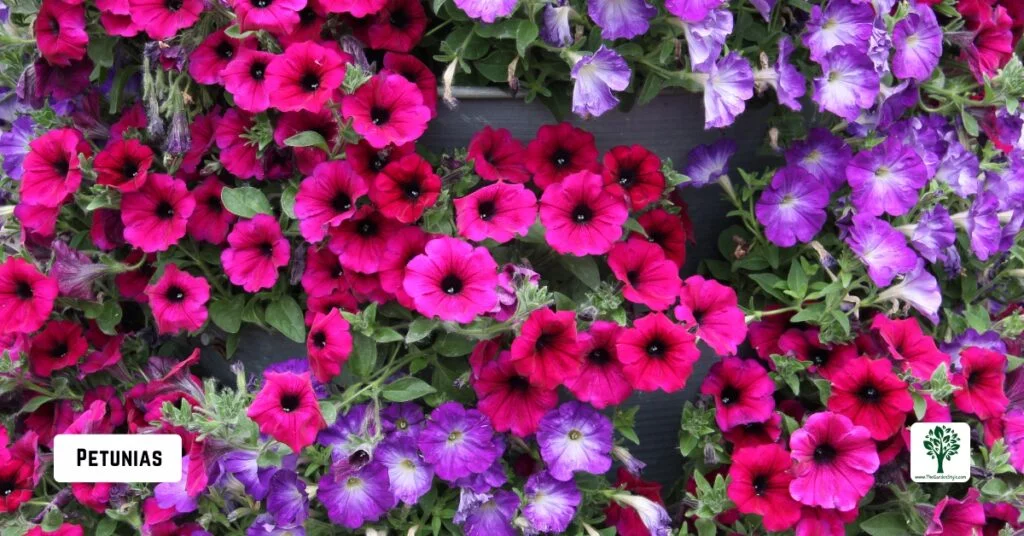
Petunias make colorful and beneficial companions for potato plants. Their bright, fragrant flowers attract many beneficial insects like lacewings, ladybugs, and parasitic wasps that prey on potato pests.
Petunias emit a sticky substance on their leaves and stems that can help trap and control smaller insect pests like aphids, leafhoppers, and spider mites before they reach potato plants.
Companion Plants for Potatoes to Grow in Buckets with Potatoes
Here are some great companion plants that can be grown in buckets or containers alongside potato plants:
- Marigolds are excellent for growing in pots with potatoes. Their strong scent helps repel nematodes and rabbits that may damage potato plants. Marigolds also have relatively shallow roots that won’t compete heavily with potato roots.
- Radishes Fast-growing radishes can be planted in the same container as potatoes. As they grow, their taproots help loosen and aerate the soil for better potato tuber formation. Radishes also act as a trap crop for nematodes and root maggots.
- Compact nasturtium varieties make ideal companions in potato buckets or barrels. They produce pungent aromas that deter aphids and potato beetles while attracting beneficial predators. Plant nasturtiums around the container’s edges.
- Chives have the pest-deterring traits of other alliums but with a relatively small, contained growth habit suited to containers. Intersperse a few chive plants among your potatoes.
- Petunias Plant a ring of petunias around the rim of your potato container. Their sticky leaves and stems can help trap smaller pests like aphids and leafhoppers before they reach the potato plants.
When growing companions in buckets with potatoes, be sure to use a large enough container and provide consistent moisture and nutrients to support multiple plants. Proper spacing is also key to prevent overcrowding.
Plants to Avoid with Potatoes
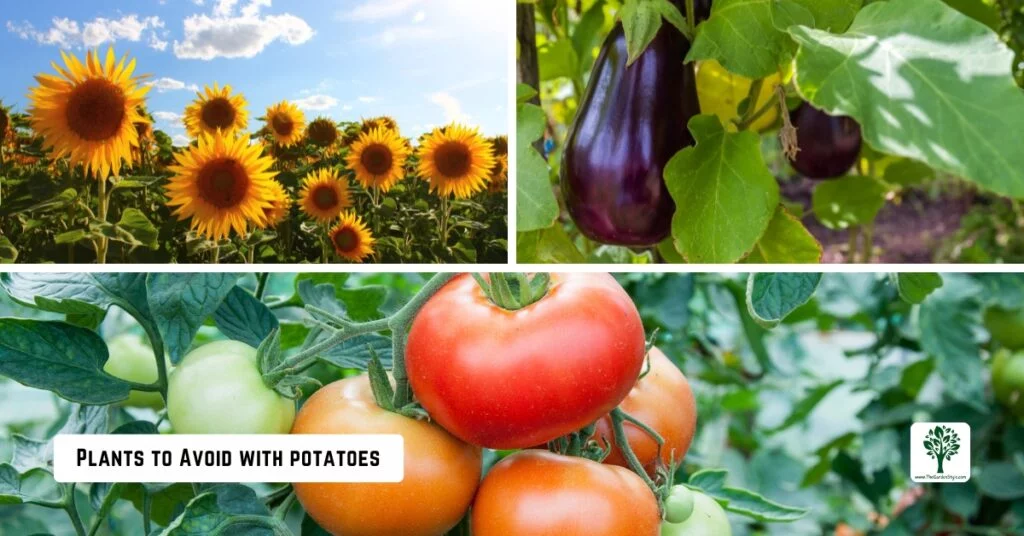
While some plants make great companions, others can spell trouble for your potato crop. Here are a few species to steer clear of:
Sunflowers
As beautiful as they are, sunflowers are nutrient hogs that can outcompete potato plants for soil resources. They also cast heavy shade, which potatoes don’t appreciate.
Tomatoes, Peppers, Eggplants
While they’re all part of the nightshade family, potatoes shouldn’t be planted alongside tomatoes, peppers, or eggplants. These cousins can transmit diseases and compete for the same nutrients in the soil.
Raspberries, Blackberries
The extensive root systems of berry bushes make them poor companions for potatoes. They’ll quickly monopolize soil nutrients and water, leaving your potato plants high and dry.
Planting and Maintenance Tips
Now that you know the best (and worst) plant pals for potatoes, here are a few tips to help you make the most of companion planting:
- Spacing and Rotation: Avoid planting the same crops in the same spot year after year. Rotate your potato patch annually and space companions at least 12 inches away from potato plants.
- Soil Prep: Amend your soil with compost or aged manure before planting to give your spuds a nutrient boost.
- Water and Fertilize: Potato plants are thirsty! Water them deeply once a week and side-dress with a balanced fertilizer mid-season.
Final Conclusions
Companion planting offers a holistic approach to gardening that promotes biodiversity and maximizes the health and productivity of your crops. By choosing the right companion plants for your potatoes and avoiding incompatible ones, you can create a thriving ecosystem in your garden. Experiment with different combinations to find what works best for your unique growing conditions, and enjoy the bountiful harvests that result from a well-planned garden.
Frequently Asked Questions
As a general rule, leave at least 12 inches between potato plants and their companions. This gives both species enough room to spread their roots without competing for resources.
Not necessarily. You can sow fast-growing companions like radishes after your potato plants have sprouted. Just be mindful of maturation times so you don’t disturb potato plants when harvesting early companions.
Absolutely! Nutrient-fixers, like legumes, feed the soil, while pest deterrents like marigolds and alliums protect potato plants from damage – both of which can translate to higher yields come harvest time.
If this post about the best companion plants for potatoes was helpful, please share it:
